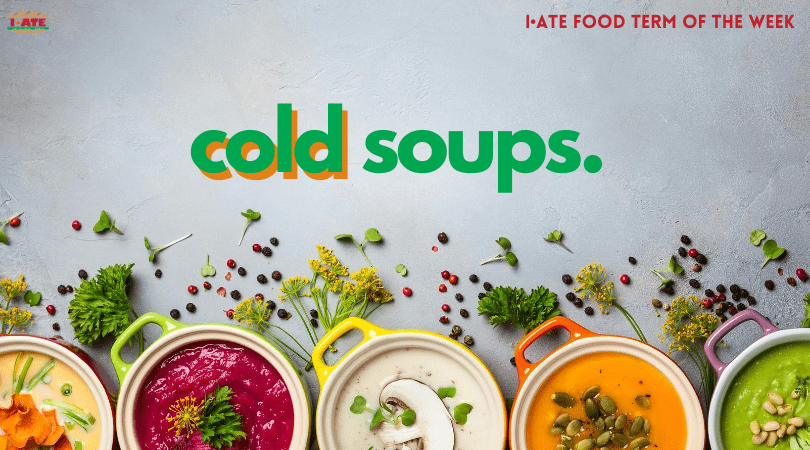With this sunny and warm weather, who wouldn’t be keen for a cold soup? It’s refreshing, colourful and loaded with seasonal fruits and vegetables… Ideal for summer evenings! If gazpacho usually comes to mind, there are other cold soup recipes from all over Europe that we propose you to discover, through our I·ATE Food Term of the Week.
 Let’s start with Spain! One of the most popular cold soups around the world – the Andalusian Gazpacho, comes from the southern Spanish region of Andalusia. Unlike what most people think (especially abroad), the original version has no bread and is a creamy orange-pink rather than a clear lipstick red. The emulsion of red tomato juice, palest green cucumber juice and golden olive oil produces the right color and a smooth, almost fluffy texture.
Let’s start with Spain! One of the most popular cold soups around the world – the Andalusian Gazpacho, comes from the southern Spanish region of Andalusia. Unlike what most people think (especially abroad), the original version has no bread and is a creamy orange-pink rather than a clear lipstick red. The emulsion of red tomato juice, palest green cucumber juice and golden olive oil produces the right color and a smooth, almost fluffy texture.
Although gazpacho is the most famous chilled soup, ajo blanco is the original version. This thrifty mixture dates back to the Morrish middle ages, before the arrival of tomatoes and pepper from the New World in the 16th century. Despite the name of the soup, garlic is rarely the main ingredient in ajo blanco, which we could consider instead as an almond soup, spiced up with garlic. It’s natural creaminess makes it a uniquely refreshing proposition and a lovely starter for a summer lunch or dinner party.

Now, let’s fly to Bulgaria and sip their delicious Tarator, a cold soup full of cooling ingredients like cucumber, dill and yogurt, that may remind of Greek Tzaziki. It´s certainly quick and easy to make – within only five minutes, you have a refreshing and healthy lunch or a great first course on a warm evening! The tarator is even better when chilled for a few hours before serving – the flavours then have plenty of time to mingle and enhance each other.

And how about French cuisine? Although some may think that having a potato soup served cold is a bit strange, Vichyssoise is undoubtedly one of the richest cold soups. Made with potatoes, leeks and cream, the recipe is most often credited to a French chef working in New York City’s Ritz-Carlton in the 1950s. The soup’s ingredients are simmered on the stove, pureed and then chilled in the refrigerator before serving… Et voilà !

Let’s finish our trip now by trying the most typical Ukranian soup – Borscht, mainly made of beets. Although it is often associated with harsch Russian winters, this glistening borscht is meant to be served cold, at the height of summer. Light, lemony and infused with garlic, the soup is utterly refreshing, even thirst-quenching.
We hope you enjoyed this short culinary tour through Europe, sipping delicious cold soups. Have a nice weekend!
Written by Laura Campan – Translator, Liaison Interpreter and Communication Manager, currently completing a six-month communication internship at the Terminology Unit of the European Parliament (Luxembourg)
Sources:
- Spanish Food, Ajo Blanco. Available at: http://bit.ly/2uS88dT (Accessed 21 July 2017)
- Bulgaria Travel, Traditional Bulgarian Cuisine. Available at: http://bit.ly/2eDoakV (Accessed 21 July 2017)
- The New York Times (2015), Gazpacho, Seville-Style, to Sip in Summer. Available at: http://nyti.ms/2tz7kuh (Accessed 21 July 2017)
- NYT Cooking, Clear Summer Borscht. Available at: http://nyti.ms/2ukdGMM (Accessed 21 July 2017)

